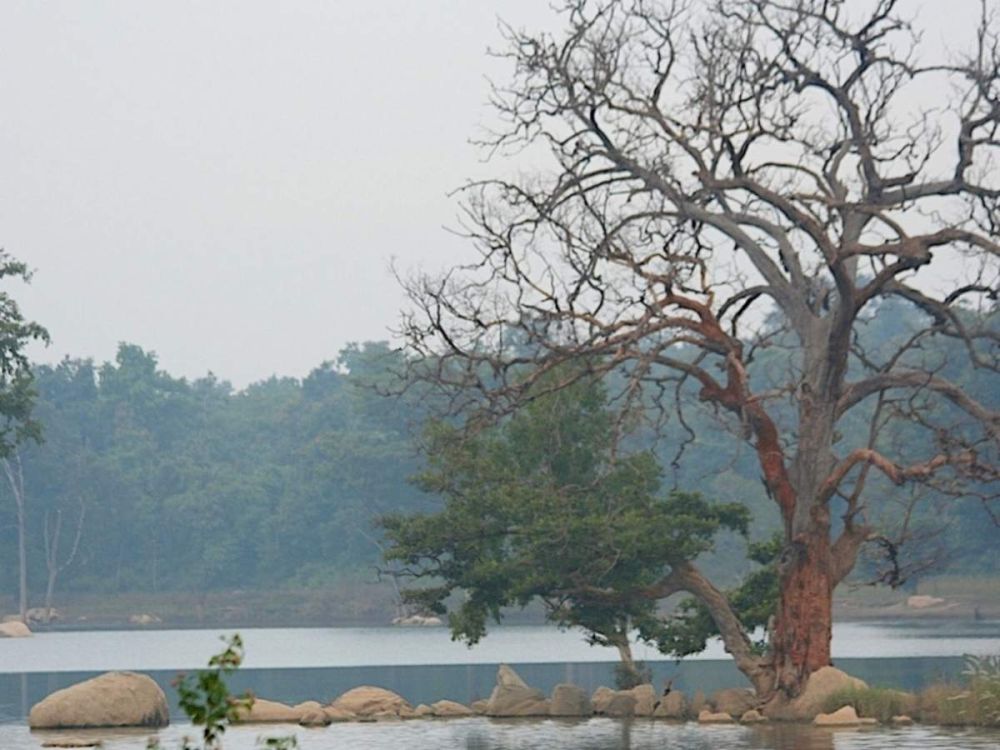

The history of tourism in Sitaghat, nestled within the lush confines of Pench National Park in Madhya Pradesh, India, is closely linked to the wider history of the park itself. Pench National Park, which inspired Rudyard Kipling's classic novel "The Jungle Book", was established in 1975 under the Wildlife Protection Act, and it was declared a tiger reserve in 1992. Over the years, the park has become an essential sanctuary for the royal Bengal tiger, and a popular destination for wildlife enthusiasts and nature lovers.
While Pench National Park's blend of dense forests, exotic wildlife, and serene environment has attracted tourists for several decades, Sitaghat, specifically, is a newer addition to the tourism map. Known for its picturesque setting by the Pench River, with the backdrop of beautiful Dhawda trees, Sitaghat has caught the attention of tourists only in the recent years.
Initially, the primary tourist activities in Pench revolved around jeep safaris and wildlife spotting. However, as the number of visitors grew, many became more interested in the unparalleled natural beauty and tranquility that places like Sitaghat could offer. The area's ethereal mornings, with the river mirroring the sky's hues and the chorus of birds, began to be featured prominently in travel literature and photography, further sparking the interest of potential tourists.
Today, Sitaghat has solidified its position as a must-visit destination for those visiting Pench National Park. It is particularly renowned for its spectacular sunrises and sunsets, where the changing colors of the sky cast a magical glow on the river. The spot is also a haven for birdwatchers, offering sightings of numerous bird species, such as kingfishers, egrets, and herons. The serene atmosphere at Sitaghat makes it a perfect spot for meditation and relaxation, away from the hustle and bustle of city life.
In recent years, the trends in tourism at Sitaghat have evolved, with an increasing emphasis on sustainable and responsible tourism. There is a growing awareness among both tourists and operators about the importance of preserving the park's delicate ecosystem. This has given rise to eco-friendly lodges and the promotion of activities that support conservation efforts.
Photography tours and birdwatching excursions have become increasingly popular, as have walking safaris that allow tourists to experience the park's natural beauty at a slower pace. Wellness tourism is also on the rise, as more visitors seek opportunities for rejuvenation amidst nature, combining wildlife tours with yoga and meditation sessions.
Local communities are becoming more involved in tourism as well, providing cultural experiences that complement the wildlife sightings. These include tribal dance performances, local cuisine tastings, and craft demonstrations, adding a rich cultural dimension to the wildlife-centric itineraries of visitors to Sitaghat and Pench National Park.
In conclusion, while the tourism history of Sitaghat is relatively recent, the area has quickly become an integral part of the Pench National Park experience. With ongoing efforts to promote sustainable practices and the increasing involvement of local communities, Sitaghat is set to grow as a destination that offers a perfect blend of natural beauty, wildlife, and cultural immersion.